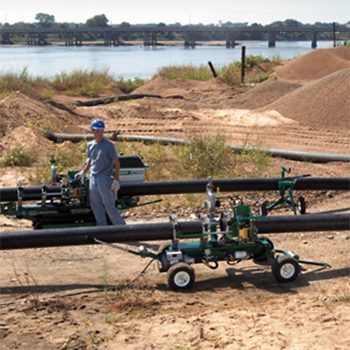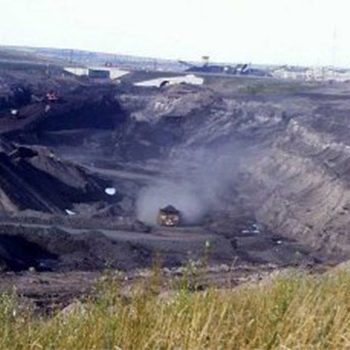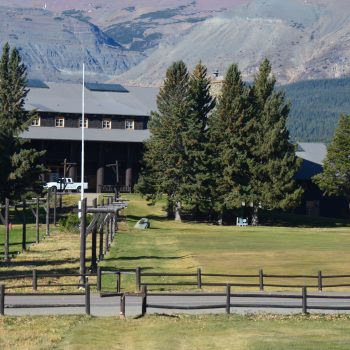Eureka, Utah — Brian Shields squints his eyes and stares into the wavy heat-blurred mirage floating over the twin polyethylene pipelines stretching into the Utah desert. A pair of McElroy fusion machines is spitting out 80 feet of new pipeline every 15 minutes while a single fusion technician slowly paces between them like an expecting father. Shields slides his hardhat off to expose his shaved head to the August sun and says, “In a total of 12 days, we’ll be pumping water through a new 22,000 foot HDPE pipeline.”
The process of running more than one fusion machine at the same time is called piggybacking. Polyethylene pipeline contractors across the country are embracing the technique to install pipelines at a rate never imagined before.
McElroy builds the best fusion machines in the world and if there were any failure of equipment, it could have been devastating to the operation
Piggybacking is the simple process of using one fusion technician to operate additional fusion machines at the same time. Following the joining process of polyethylene pipe, there is a cool down time that is approximately one minute per diameter inch of the pipe. The pipe cannot be rough handled or removed from the fusion machine without allowing for the cool down. Piggybacking basically removes this delay in production. While the fusion joint is cooling on the first fusion procedure, there is time to start a second and even third fusion joint in additional machines. While the second and third joints are cooling, the first is ready to be moved and the process rotates accordingly. On a large job, the production advantage grows exponentially with the amount of pipe involved.
“The daily cost of being on any construction site is a heck of a lot higher than the cost of additional fusion machines,” says Shields. “Time is crucial to the bottom line and piggybacking gives contractors a big advantage in time.” Shields works for High Country Fusion in Idaho and is no stranger to piggybacking. He was involved with an emergency sewer bypass operation for the city of Tucson Arizona that was the largest bypass in U.S. history. Over 20 miles of high-density polyethylene (HDPE) pipe was fused together in a piggyback fashion in just four and a half weeks with eleven McElroy fusion machines. The pipeline was needed to bypass a ruptured sewer line that had dumped 5-7 million gallons per day of untreated sewage into the Santa Cruz River during the first seven days of the spill.
“Because of the environmental emergency in Tucson , there was no other choice besides McElroy fusion equipment and piggybacking,” said Shields. “McElroy builds the best fusion machines in the world and if there were any failure of equipment, it could have been devastating to the operation.”
Another example of the huge advantage piggybacking offers occurred in Dalton Georgia . When the construction company W.L. Hailey bid the water infrastructure job at a one-year time scale, while all other bidders were at four, everyone thought they were crazy. In reality, they were just bidding the job with the idea of using piggybacking. Not only were they awarded the bid; they finished the job two months ahead of their one-year schedule and reaped the benefits. Hailey used 19 McElroy fusion machines to fuse together a million feet of pipe in less than a year. “We knew with the extra equipment, we could essentially triple the production from what we had originally estimated,” said Mony Beasley a spokesperson for Hailey. Beasley also points out that McElroy has distributorships across the country who can provide a complete line of fusion machines along with fast, professional training and technical support.
“A lot of people are aware of the material advantages of HDPE but are hesitant because of their unfamiliarity in working with it,” said Shields. “Piggybacking is a catalyst, much like trenchless technology, that is bringing the construction advantages of HDPE to the forefront of contractor’s and civil engineer’s minds. Once they see how forgiving HDPE is, and how easy it is to work with, stand back because HDPE is really going to grow.”


